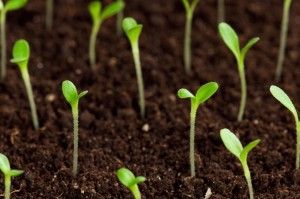 If you are new to bonsai, it’s very important to understand the hobby before you buy one of these spectacular plants and start to care for one for yourself. A bonsai tree is much more than decoration for your home and although a bonsai tree may seem to be something that’s very attractive for fun to grow, it can take a lot of work. Over the course of this guide we will explain how to grow a bonsai tree, the types of bonsai trees, exactly what a bonsai tree is and where you can start to think about buying a bonsai tree and the accessories that you will need to care for one.
If you are new to bonsai, it’s very important to understand the hobby before you buy one of these spectacular plants and start to care for one for yourself. A bonsai tree is much more than decoration for your home and although a bonsai tree may seem to be something that’s very attractive for fun to grow, it can take a lot of work. Over the course of this guide we will explain how to grow a bonsai tree, the types of bonsai trees, exactly what a bonsai tree is and where you can start to think about buying a bonsai tree and the accessories that you will need to care for one.
What is a bonsai tree?
Before we discuss how to grow a bonsai tree We must understand what a bonsai is. Bonsai trees are miniature trees which can form their own mini ecosystems and grow in a very small pot. A bonsai tree may be one of the only trees that you can think of that you could keep on a bookshelf or in a small spot within your home. Different types of bonsai trees will achieve different looks and depending on the type of bonsai tree that you have it can take on different sizes, different leaf shapes as well as flowering blossoms and more.
The bonsai tree first started in Japan and this tradition dates back well over 1000 years. The primary purpose of a bonsai tree is to provide meditation and contemplation as well as a fine hobby that strengthens ingenuity and creativity. A bonsai tree takes real effort to cultivate and a well kept bonsai tree is extremely respected among enthusiasts.
Starting a bonsai tree may involve the use of a smaller pot and the idea is to grow and cultivate a small tree or shrub to the point where it eventually starts to take on the look of a full tree or landscape when placed in a display pot. Display pots are designed to give the illusion that a bonsai tree is much bigger. There are many designs that you can find online and there are only really if you accepted shapes and proportions that would classify a tree as being a true bonsai. Since it’s introduction there are many enthusiasts who have perfected precise cultivation techniques when it comes to potting, grafting, training, pruning and reducing the roots to make sure that the trees will grow and continue to mimic the same style as a full grown tree. It is possible for you to learn how to grow a bonsai tree for yourself or to even buy one of these trained trees for your home.
How to start a bonsai tree:
One of the easiest things for beginners to start with when it comes to learning how to grow bonsai tree, is to find out where to buy a bonsai tree that has been trained and trimmed. A variety of different greenhouses and decor stores will have bonsai style trees which have been appreciated and pre-trained so that you need to only carry out the upkeep to make sure that the tree will continue to look its best. Many of these bonsai trees are sold already in their show pots and resemble a finished bonsai tree even upon the date of purchase.
Of course if you are interested in creating your own bonsai tree you will need to start with some type of wild plant. Look around your yard or a wooded area to find trees or shrubs that you would like to re-create in a show pots. There are most likely some plants from your area that would be great for starting a bonsai tree. You can also grow a bonsai tree from cuttings or start from seeds. Grafting is also a popular method for starting a bonsai tree as well. When you find a plant that you would like and you have chosen to collect wild plants as your bonsai method, dig up the soil surrounding the plant and transplanted into a deep training box or directly into your garden. From here you can prune the plant as well as guide its movement and growth with wires to get the proper shape. After the plant has grown to your specifications you can transplant it into its own pot. It’s usually best not to start with a show pot to begin with and it’s very important that you use the soil that the tree has been growing in until you have developed a strong root structure. When you feel as though your plant is ready to come inside, and you have created a strong root structure you can switch over to bonsai soil which will help to shape the growth of an indoor plant into a bonsai tree.
Traditional names:
Once you figure out how to grow a bonsai tree, you can learn about the traditions. When learning how to grow a bonsai tree it’s important to learn about some of the more traditional shapes and names so that you can receive advice depending on the style you would eventually like to produce. Here are some of the top bonsai tree types:
Chokkan- this type of tree is based off of a Cedar or cypress tree and it resembles a triangular arrangement of branches in a taller bonsai style with a thick trunk.
Hokidachi- this bonsai type looks similar to a broom and can be one of the more difficult types to grow. The branches form a half dome at the top added features a medium-size trunk similar to an Elm or Maple.
Shakan- these types of trees have a slanted trunk and look similar to trees that you might find growing on a mountaintop with strong winds. Growing these trees perfectly did take a lot of work.
Moyohgi- this type of bonsai tree has a curved trunk and twisted branches. This is an intricate design with complex curves that require patients and dedication to grow.
These are just a few types of the most popular bonsai trees. Feel free to look online to see other types that have been created and to find inspiration for your own style of bonsai tree.
Bonsai Soil:
The soil that you use for indoor bonsai plants is slightly different than what you might find in your garden. Many bonsai gardening information websites will tell you that bonsai soil is extremely important to keeping your bonsai tree sustainable. If you can find out where to buy a bonsai tree is a good chance that the same retailer will have bonsai soil as well as bonsai tools that you can use for upkeep. Understanding soil and the differences between different mixtures is one of the keys to mastering how to grow a bonsai tree.
Soil for a bonsai tree is made up of organic and some man-made compounds which will work at keeping the bonsai restricted to its container. This means that when you’re tree is strong enough, if you are able to use this type of soil your tree will no longer try to grow outside of its pot. Without using this type of soil you could have a real mess on your hands when the root structure begins to crack its way through your pot and the tree becomes large and unmanageable. Most bonsai retailers can not only tell you how to grow bonsai tree but can also tell you the right type of soil mix for the plant that you are growing. Some types of bonsai soil will have extra sand and grit whereas others are more clay based. Ultimately it’s entirely dependent on the plant that you have collected and turned into a bonsai tree.
Bonsai care:
 In order to make sure that your bonsai tree remains healthy you will need to continue to perform daily care. Without daily care your bonsai tree could die off and you may have to start again after all of your hard work.
In order to make sure that your bonsai tree remains healthy you will need to continue to perform daily care. Without daily care your bonsai tree could die off and you may have to start again after all of your hard work.
Perhaps one of the most commonly asked questions when people want to know how to grow a bonsai tree, is how often a bonsai tree will need water. Ultimately this is all dependent on the climate that the bonsai tree is kept in an a spot in the house that you keep your bonsai tree. The best time to water a bonsai tree is usually early on in the morning with room temperature tap water. The easiest way to see if a bonsai tree needs water is to check the soil to make sure it has moisture. When watering your bonsai tree make sure that most of the soil surrounding the trunk gets wet and keep dampening the soil until you start to see a bit of drainage from the bottom of your pot. This will mean that the roots are getting some water and your bonsai tree should remain watered throughout the day barring that it isn’t left in direct sunlight in a dry climate.
Fertilization is also important for bonsai trees. When kept inside bonsai trees will need balanced fertilizer biweekly. Find a local retailer where you can buy bonsai trees and asked them for their fertilization recommendations. Normally a balanced fertilizer of 20-20-20 is great for keeping bonsai trees healthy however you should not fertilize a bonsai tree if it is sick or experiencing difficulty such as fading leaves or pests.
Tools of the trade:
In learning how to care for a bonsai tree part of growing a bonsai tree involves the use of special tools to keep it healthy. Just as you may have to regularly prune and outdoor tree there are pruning tools available for indoor bonsai trees as well and you may need to prune back some of the leaves in order to keep your tree healthy. Removing some of the dead leaves is also a great way that you can spur future growth and this is something that will need to be done on occasion. Special tools such as knob cutters, root breaks, branch benders and bud scissors will also help you to fully customize the look of your bonsai tree and change the way that it grows. There are many people that use wire to direct their bonsai tree and change the shape of the tree and its growth patterns as well. If you’re looking for a specific look it’s important that you get out a small set up shears and wire so that you can produce a custom bonsai tree to your specifications. As you get better with bonsai trees you can produce more difficult shapes and expand upon your hobby.
How Long do They Live For:
Regardless of whether you purchased a trained bonsai kit, or grew your own bonsai tree the truth is if you are able to care for your bonsai tree it could actually outlive you. The oldest bonsai tree to date is well over 300 years old and was created using a white pine. This bonsai tree was incredibly resilient and even survived the Hiroshima bomb blast of 1945. This website will give you everything you need to know about how to grow a bonsai tree, give your tree the opportunity to outlive it’s owner.
